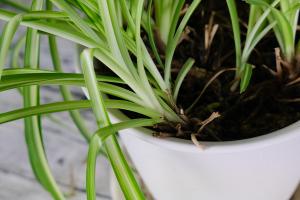Introduction
Plant hybridization has been a crucial tool used to improve agricultural production, increase crop yields, and develop improved plant varieties. In the past, the idea of plant hybridization was considered controversial, and it was believed that it could lead to issues such as decreased vigor and productivity. However, the development of new hybridization techniques has changed this perception, and today plant hybridization is widely used in the agricultural industry.
The history of plant hybridization
The first known examples of plant hybridization can be traced back to the work of Gregor Mendel in the mid-19th century. Mendel, an Austrian monk, conducted breeding experiments with pea plants and discovered the laws of inheritance that govern the transmission of traits from parent plants to their offspring. Later, in the early 20th century, plant hybridization techniques became more advanced, and the use of hybrid plants in agriculture began to grow.
The benefits of plant hybridization
Plant hybridization has many benefits, including increased resistance to pests and diseases, greater tolerance to environmental stress, and improved yields. Hybrid plants are also often more uniform and consistent in their growth patterns, making them easier to cultivate and harvest.
In addition, many hybrid plants are typically bred to be more desirable from a consumer perspective. For example, hybrid tomatoes often have a longer shelf life and superior flavor than traditional tomatoes. These traits can help farmers to grow more profitable crops and increase their overall income.
How plant hybridization helped change perceptions
In the past, plant hybridization was viewed as controversial because it was believed that it could lead to problems such as decreased vigor and productivity. However, over time, advances in plant hybridization techniques have helped to dispel this perception.
One key factor that helped change these perceptions was the development of new hybridization methods that were more effective and reliable. For example, modern plant breeding programs now use sophisticated methods such as DNA sequencing and marker-assisted selection to identify and select the best traits from parent plants.
Another factor that helped to change perceptions was the introduction of highly successful hybrid plant varieties, such as the hybrid corn and wheat varieties that were developed in the mid-20th century. These new varieties proved highly resistant to pests and diseases and produced significantly greater crop yields than their non-hybrid counterparts.
Conclusion
Today, plant hybridization is widely recognized as an effective tool for improving plant productivity and resilience, and it is widely used in the agricultural industry. While there are some concerns about the use of hybrid plants, modern hybridization techniques and highly successful hybrid varieties have shown that these concerns are largely unfounded. As we continue to innovate and develop new techniques for plant hybridization, we can expect to see even more improvements in plant productivity and agricultural sustainability.

 how many times do yo...
how many times do yo... how many planted tre...
how many planted tre... how many pine trees ...
how many pine trees ... how many pecan trees...
how many pecan trees... how many plants comp...
how many plants comp... how many plants can ...
how many plants can ... how many plants and ...
how many plants and ... how many pepper plan...
how many pepper plan...





























